Traditionalist Issues
 |
 |
 |
 |
 |
 |
 |
Dialogue Mass - CL
Tyrrell Fought the ‘Tyranny’ of Scholasticism
It was characteristic of all modernists – freedom of thought and self-expression being of paramount importance in their world view – to chafe under the restrictions of any “external authority” or higher power that would stifle the spirit of independence which they fostered as the highest value. The spiritual authority of Rome in areas of Faith and Morality was their prime target of attack, as it had been during the Protestant “Reformation,” and still is in our day.
Tyrrell deeply resented the institutional Church, especially her authority structures that wielded juridical power against the expression of heretical ideas. He never forgave her for having censored his works and excommunicated him, and routinely defamed her as a prison for the soul, a repressive, authoritarian hellhole as, for example, when he stated:
“The Church sits on my soul as a nightmare, and the oppression is maddening.”1
 He often complained about the “stifling” of intellectual freedom under Pius X who mandated the study of Scholastic Philosophy to form part of all seminary training. Tyrrell charged that “the theological Schools have come to tyrannize over the Church in these evil days.”2 He specifically described Scholasticism as a “tyranny”;3 in fact, “one of the worst intellectual tyrannies the world has ever known.”4 His vision for the Church was to change her into a religion freed of constraints that would make the believer “a bird free on the wing” and “not crushed and crumpled in the grip of the hawk.”5 The human spirit, he believed, could never be free as long as it was held prisoner by the necessity of obedience to religious superiors and respect for the Scholastic system of intellectual reasoning.
He often complained about the “stifling” of intellectual freedom under Pius X who mandated the study of Scholastic Philosophy to form part of all seminary training. Tyrrell charged that “the theological Schools have come to tyrannize over the Church in these evil days.”2 He specifically described Scholasticism as a “tyranny”;3 in fact, “one of the worst intellectual tyrannies the world has ever known.”4 His vision for the Church was to change her into a religion freed of constraints that would make the believer “a bird free on the wing” and “not crushed and crumpled in the grip of the hawk.”5 The human spirit, he believed, could never be free as long as it was held prisoner by the necessity of obedience to religious superiors and respect for the Scholastic system of intellectual reasoning.
As a result of this kind of obloquy from Tyrrell and the early modernists, the Scholastic System was associated in the minds of progressivists with injustice and oppression. The very word Scholasticism now provokes hoots of laughter and ribald remarks among today’s clergy. It conjures up mental pictures of silly and pointless sophistries, useless disputations about issues that are irrelevant to life in the real world, all conducted by people who claimed to have the monopoly of knowledge and provide an answer to everything.
Francis treats Scholasticism as an absurd anomaly
It hardly needs saying that Francis, with his peculiar talent for spreading confusion and division on a global scale, had scant respect for the Church’s great Scholastic tradition. He may, for the sake of appearances, have praised some aspects of it on occasion but, in reality, he took every opportunity to criticize it either directly or indirectly, following Tyrrell’s example. The latter, however, at least had the merit of being less hypocritical.
After presenting a speech at the 36th General Congregation of the Society of Jesus on October 24, 2016, Francis conducted a question-and-answer session with his fellow-Jesuits. In it, he made a sweeping condemnation of the Scholastic system used in seminaries from post-Modernism up to Vatican II:
“I and those of my generation, perhaps not the youngest here, but my generation and some of the later ones too, were educated in a decadent Scholasticism. We studied theology and philosophy with manuals. It was a decadent Scholasticism. For example, to explain the “metaphysical continuum” ‒ it makes me laugh every time I remember ‒ we were taught the theory of the ‘puncta inflata.’ When the great Scholasticism began to lose force, there arose that decadent Scholasticism with which at least my generation and others have studied.”6
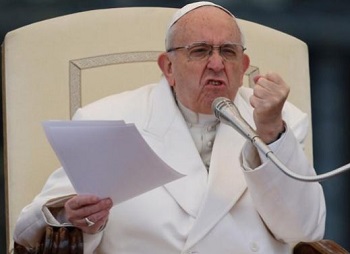 Let us consider for a moment the likely impact that such derisive expressions – which had for decades been part of the progressivist narrative – would have had on the morale of young seminarians around the time of Vatican II. Being told that what they had been taught came from dry and dusty old manuals containing obsolete content that would make them appear ridiculous in the eyes of the modern world was a sure way of persuading them to abandon the old theology for the new. After all, Vatican II had set the stage for the “New Evangelization” (which is really only an updated version of the old Modernism) which is presented as the only way forward for what the Church should believe and do today.
Let us consider for a moment the likely impact that such derisive expressions – which had for decades been part of the progressivist narrative – would have had on the morale of young seminarians around the time of Vatican II. Being told that what they had been taught came from dry and dusty old manuals containing obsolete content that would make them appear ridiculous in the eyes of the modern world was a sure way of persuading them to abandon the old theology for the new. After all, Vatican II had set the stage for the “New Evangelization” (which is really only an updated version of the old Modernism) which is presented as the only way forward for what the Church should believe and do today.
The Pope’s vilification of the Scholastic System of seminary formation was a subtle propaganda tool which works by inducing fear of being marginalized by the modern world and of being a victim of tyrannical control by an out-of-date Church. This, too, was the message promoted by Fr. Tyrrell.
The condemnation of Scholasticism by progressivist theologians as outdated had met with the following rebuke by Pope Pius X:
“For Scholastic Philosophy and Theology they have only ridicule and contempt. Whether it is ignorance or fear, or both, that inspires this conduct in them, certain it is that the passion for novelty is always united in them with hatred of Scholasticism, and there is no surer sign that a man is on the way to Modernism than when he begins to show his dislike for this system. Modernists and their admirers should remember the proposition condemned by Pius IX: The method and principles which have served the doctors of Scholasticism when treating of theology no longer correspond with the exigencies of our time or the progress of science (Syllabus Prop. 13). They exercise all their ingenuity in diminishing the force and falsifying the character of tradition, so as to rob it of all its weight.” (Pascendi § 42)
Furthermore, the generations of seminary training to which Francis refers were anything but decadent. In that era, from the mid-19th century to the late 1950s, the long tradition of Scholasticism, especially Thomistic metaphysics, was at the height of its prestige. It was encouraged by a succession of papal accolades:
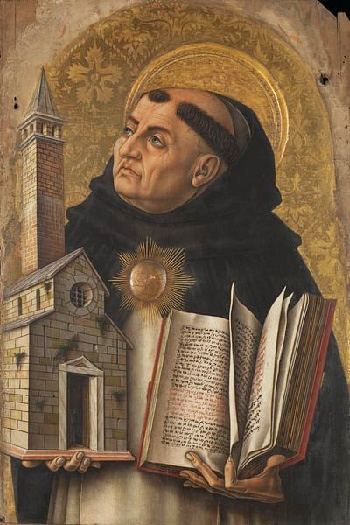
“The Church has no philosophy of her own, nor does she canonize any one particular philosophy in preference to others.” (Fides et ratio 1998, § 49)
In a vain attempt to back up his claim, he referred to a passage from Humani generis9 but without supplying a quote from it. There is nothing, however, in the reference to support his opinion. Au contraire, in the same Encyclical, Pius XII repeatedly named the philosophy of St. Thomas Aquinas as “our own”: (“nostram philosophiam”; “philosophiam nostris traditam scholis” etc.)
As for John Paul II’s second statement, all the evidence indicates that the Church has canonized Thomistic Philosophy, not least by mandating its use in the Code of Canon Law (1917), but also through the unanimous judgement of successive Popes from the Council of Trent onwards. It is only since Vatican II that the Church stopped counting Thomistic Philosophy as one of her own quintessentially Catholic assets, and began treating it as one among many philosophies vying for hegemony in the seminaries.
Continued

Tyrrell deeply resented the institutional Church, especially her authority structures that wielded juridical power against the expression of heretical ideas. He never forgave her for having censored his works and excommunicated him, and routinely defamed her as a prison for the soul, a repressive, authoritarian hellhole as, for example, when he stated:
“The Church sits on my soul as a nightmare, and the oppression is maddening.”1

Modernist Fr. Tyrrell died excommunicated & despondent, refusing to recant his heresy
As a result of this kind of obloquy from Tyrrell and the early modernists, the Scholastic System was associated in the minds of progressivists with injustice and oppression. The very word Scholasticism now provokes hoots of laughter and ribald remarks among today’s clergy. It conjures up mental pictures of silly and pointless sophistries, useless disputations about issues that are irrelevant to life in the real world, all conducted by people who claimed to have the monopoly of knowledge and provide an answer to everything.
Francis treats Scholasticism as an absurd anomaly
It hardly needs saying that Francis, with his peculiar talent for spreading confusion and division on a global scale, had scant respect for the Church’s great Scholastic tradition. He may, for the sake of appearances, have praised some aspects of it on occasion but, in reality, he took every opportunity to criticize it either directly or indirectly, following Tyrrell’s example. The latter, however, at least had the merit of being less hypocritical.
After presenting a speech at the 36th General Congregation of the Society of Jesus on October 24, 2016, Francis conducted a question-and-answer session with his fellow-Jesuits. In it, he made a sweeping condemnation of the Scholastic system used in seminaries from post-Modernism up to Vatican II:
“I and those of my generation, perhaps not the youngest here, but my generation and some of the later ones too, were educated in a decadent Scholasticism. We studied theology and philosophy with manuals. It was a decadent Scholasticism. For example, to explain the “metaphysical continuum” ‒ it makes me laugh every time I remember ‒ we were taught the theory of the ‘puncta inflata.’ When the great Scholasticism began to lose force, there arose that decadent Scholasticism with which at least my generation and others have studied.”6

Francis joined ranks with Modernism when he railed against ‘decadent’ Scholasticism
The Pope’s vilification of the Scholastic System of seminary formation was a subtle propaganda tool which works by inducing fear of being marginalized by the modern world and of being a victim of tyrannical control by an out-of-date Church. This, too, was the message promoted by Fr. Tyrrell.
The condemnation of Scholasticism by progressivist theologians as outdated had met with the following rebuke by Pope Pius X:
“For Scholastic Philosophy and Theology they have only ridicule and contempt. Whether it is ignorance or fear, or both, that inspires this conduct in them, certain it is that the passion for novelty is always united in them with hatred of Scholasticism, and there is no surer sign that a man is on the way to Modernism than when he begins to show his dislike for this system. Modernists and their admirers should remember the proposition condemned by Pius IX: The method and principles which have served the doctors of Scholasticism when treating of theology no longer correspond with the exigencies of our time or the progress of science (Syllabus Prop. 13). They exercise all their ingenuity in diminishing the force and falsifying the character of tradition, so as to rob it of all its weight.” (Pascendi § 42)
Furthermore, the generations of seminary training to which Francis refers were anything but decadent. In that era, from the mid-19th century to the late 1950s, the long tradition of Scholasticism, especially Thomistic metaphysics, was at the height of its prestige. It was encouraged by a succession of papal accolades:

The Scholasticism of St. Thomas has been formally adopted by the Church as her ‘own’ philosophy
- Pius IX commended Scholasticism in Tuas libenter (1863) as “a mighty bulwark of the Faith and a formidable weapon against its enemies”;7
- Leo XIII issued Aeterni Patris (1879) in defence and encouragement of the Scholastic Philosophy of St. Thomas Aquinas;
- Pius X followed suit in Pascendi (1907), Sacrorum Antistitum (1910) and in Angelici Doctoris (1914);
- Benedict XV enshrined the tradition in the Code of Canon Law (1917);8
- Pius XI affirmed in Studiorum Ducem (1923) that the Scholasticism of St. Thomas Aquinas, which was still taught in his day, was of the highest authority, “for the Church has adopted his philosophy as her own”;
- Nearer to Vatican II, the Scholastic System was still held in high esteem for its perennial value as the Church’s basic intellectual conceptual framework. In 1950, Pius XII stated that “never may we overthrow it, or contaminate it with false principles, or regard it as a great, but obsolete, relic.. (Humani generis § 30)
“The Church has no philosophy of her own, nor does she canonize any one particular philosophy in preference to others.” (Fides et ratio 1998, § 49)
In a vain attempt to back up his claim, he referred to a passage from Humani generis9 but without supplying a quote from it. There is nothing, however, in the reference to support his opinion. Au contraire, in the same Encyclical, Pius XII repeatedly named the philosophy of St. Thomas Aquinas as “our own”: (“nostram philosophiam”; “philosophiam nostris traditam scholis” etc.)
As for John Paul II’s second statement, all the evidence indicates that the Church has canonized Thomistic Philosophy, not least by mandating its use in the Code of Canon Law (1917), but also through the unanimous judgement of successive Popes from the Council of Trent onwards. It is only since Vatican II that the Church stopped counting Thomistic Philosophy as one of her own quintessentially Catholic assets, and began treating it as one among many philosophies vying for hegemony in the seminaries.
Continued
- G. Tyrrell, ‘Letter to V.’ [Baron Friedrich von Hügel], May 18, 1903, in Maude Petre (ed.), George Tyrrell’s Letters, London: T. Fisher Unwin Ltd., 1920, p. 109.
- G. Tyrrell, The Church and the Future, p. 107.
- G. Tyrrell, ‘Letter to V.’, November 5, 1904, in Maude Petrie (ed.), George Tyrrell’s Letters, p. 108.
- G. Tyrrell, The Church and the Future, p. 33.
- G. Tyrrell, Christianity at the Crossroads, London; New York, Longmans, Green and Co., 1910, p. 219.
- Francis, ‘To Have Courage and Prophetic Audacity,’ Dialogue with the Jesuits gathered in the 36th General Congregation, Documents of the General Congregation of the Society of Jesus, January 6, 2017, p. 46.
- “Fortissimum fidei propugnaculum et formidanda contra suos inimicos arma,” Letter to Archbishop Gregor von Scherr of Munich and Freising, December 21, 1863.
- “The study of philosophy and theology, and the teaching of these sciences to their students, must be accurately carried out by professors according to the arguments, doctrines and principles of St. Thomas, which they are inviolately to hold.” (1917 Code of Canon Law, Canon 1366 § 2)
- AAS 42, 1950, p. 566.
Posted June 6, 2025

______________________
______________________
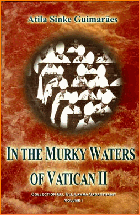 Volume I |
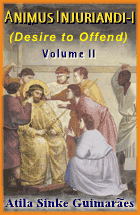 Volume II |
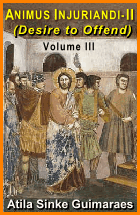 Volume III |
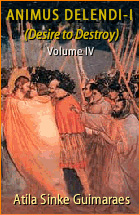 Volume IV |
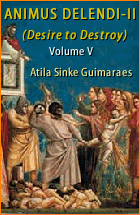 Volume V |
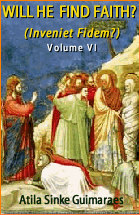 Volume VI |
 Volume VII |
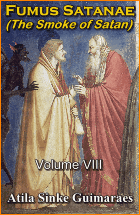 Volume VIII |
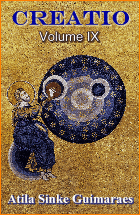 Volume IX |
 Volume X |
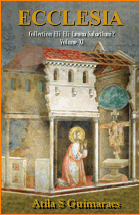 Volume XI |
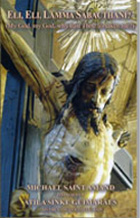 Special Edition |


